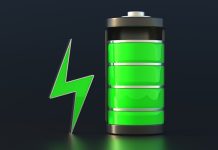
For decades, scientists have dreamed of turning carbon dioxide—the gas responsible for much of climate change—into useful fuels and chemicals.
A key part of that dream involves using copper as a catalyst, helping drive chemical reactions that turn carbon dioxide and water into things like ethanol and ethylene.
But there’s been a big problem: copper catalysts lose their effectiveness too quickly, and until now, no one fully understood why.
Now, scientists at Lawrence Berkeley National Laboratory and SLAC National Accelerator Laboratory have finally cracked the case.
Using advanced X-ray techniques, they have revealed the hidden processes that cause copper catalysts to break down during reactions.
Their findings were recently published in the Journal of the American Chemical Society.
The work is part of the Liquid Sunlight Alliance (LiSA), a collaboration led by Caltech that includes more than 100 scientists across several universities and national labs.
Their goal is to develop ways to create liquid fuels directly from sunlight, water, carbon dioxide, and nitrogen.
Scientists have known since the 1980s that copper works well in the carbon dioxide electrochemical reduction reaction (CO2RR), which converts carbon dioxide into valuable products.
However, they also knew that copper’s impressive abilities didn’t last, and the metal would degrade during the process. What exactly caused this performance loss had remained a mystery.
Using a method called small-angle X-ray scattering (SAXS) at the Stanford Synchrotron Radiation Lightsource, the research team closely watched how tiny copper particles behaved during the reaction.
They discovered two key processes at work. First, small copper particles move around and stick together into larger clumps—a process called particle migration and coalescence (PMC).
This happens mainly during the first 12 minutes of the reaction. After that, a second process called Ostwald ripening takes over, where smaller particles dissolve and redeposit onto larger ones, causing them to grow even more.
Ostwald ripening is the same process that causes crunchy ice crystals to form in old ice cream.
The team also found that the speed of these processes depends on the electrical voltage applied. Lower voltages make particles migrate and clump together, while higher voltages cause faster dissolving and redepositing.
Using a second technique called X-ray absorption spectroscopy (XAS), the researchers confirmed that the copper oxide particles turn into pure copper metal before starting to break apart and move. They also used powerful electron microscopes to capture images showing the final result: large clusters of copper particles.
Now that scientists know what’s happening, they are working on strategies to protect copper catalysts, such as using better support materials, adding protective coatings, or mixing copper with other metals. The research team plans to continue exploring these solutions to make carbon dioxide-to-fuel technology more stable and efficient.
Source: KSR.



